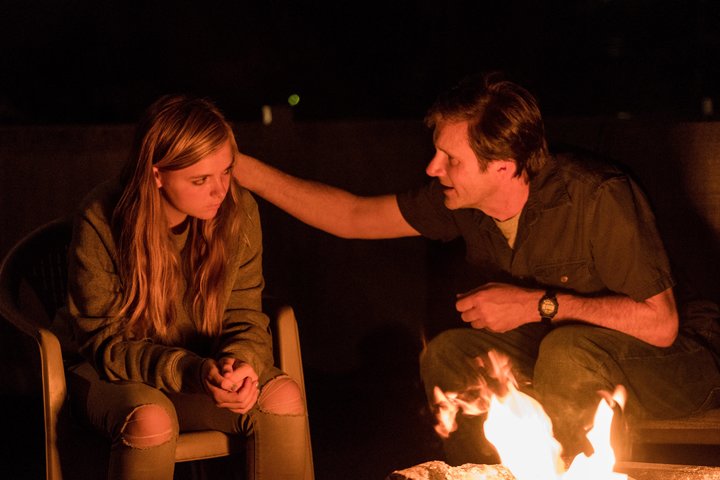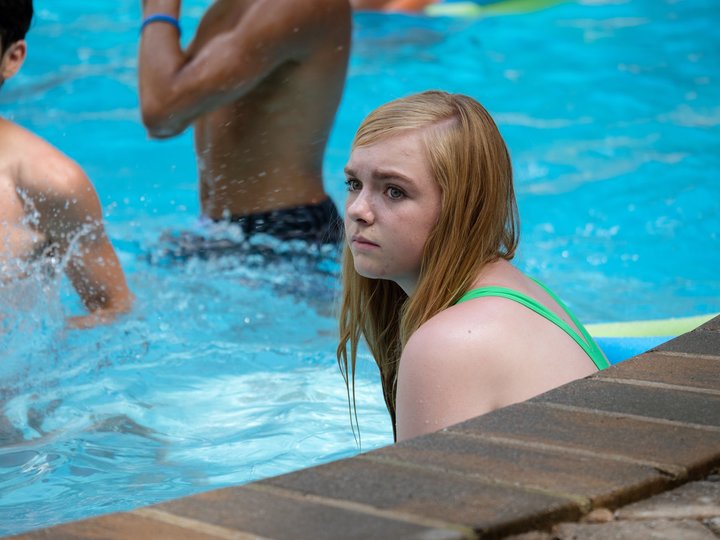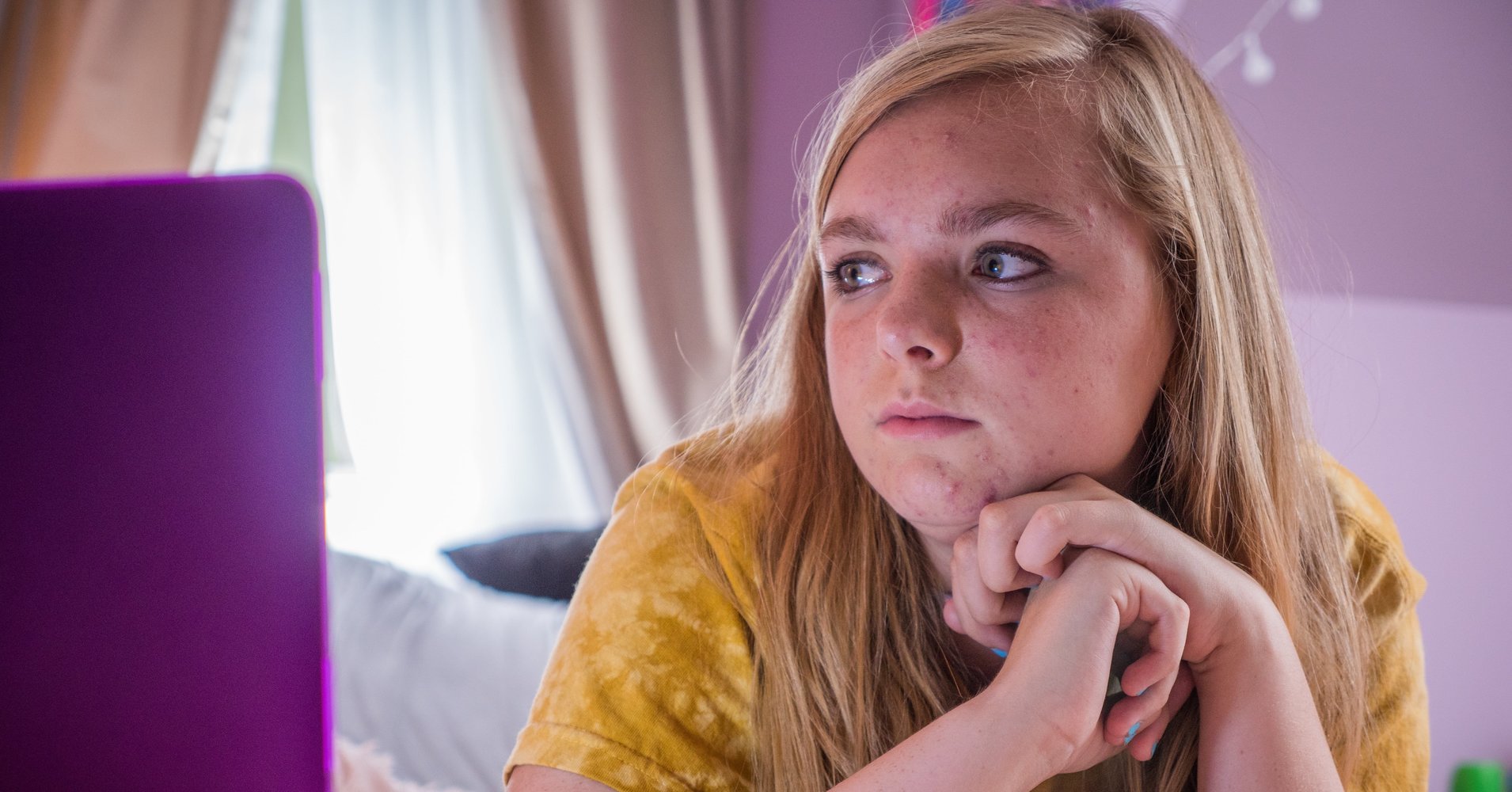[ad_1]
In a scene from comedian Bo Burnham’s new movie “Eighth Grade,” popular middle schooler Kennedy wakes up and gets out of bed to painstakingly apply mascara and eyeliner. When the deed is done, she climbs back into bed and poses for a morning Snapchat session.
Wearing only a tank top and sweats, Kennedy looks as if she’s just woken up with the perfect composure it took her minutes to muster. Sending out the photo feels peremptory, an expected part of her daily regimen. With the tap of a finger, her doctored self-image becomes accessible to as many people as she wants.
Her routine is one of the many technological rituals in Burnham’s contemporary coming-of-age story. In it, Kennedy and a slew of other middle schoolers ignore, grapple with and defy the mandate to “be yourself,” a concept that’s been fragmented in new and unimaginable ways by social media.
The movie is primarily organized around 13-year-old protagonist Kayla and the video blogs she recording during the tumultuous last week of eighth grade. They’re short, diaristic segments that preach confidence and “putting yourself out there.” Kayla styles herself after YouTube stars like Cartia Mallan and Katy Bellotte who advocate for self-care and consciousness.
“The topic of today’s video is being yourself,” Kayla proclaims. “Being yourself can be hard. And it’s like, aren’t I always being myself? And yeah, for sure. But, being yourself is, like, not changing yourself to impress someone else.”
But unlike the controlled access the glammed-up and self-assured young women that dominate the platform afford viewers, Burnham offers a rich, textured and messy view of Kayla’s life behind the laptop. Offline, she struggles to follow her own advice. Whereas she’s talkative and outgoing in her videos, she rarely speaks at school ― she’s voted “most quiet,” one of the crueler superlatives ― and has few friends. She can’t help but size herself up against her seemingly picture-perfect peers like Kennedy. Her path to self-confidence is constantly clouded by the external validation we all seek.

A24
In one notably heartbreaking scene, Kayla resurfaces a time capsule she made in sixth grade, a glittery ode “to the coolest girl in the world” she thought she’d be two years later, with dismay. Even her self-validation appears in fits and starts.
Capital-A Authenticity becomes a touchstone of determination and disagreement among the young, and especially female, characters of Burnham’s movie. They dispute each other’s claims to genuineness to feel more secure in their own sense of being genuine. For example, when typically quiet and unassuming Kayla insinuates that she has dirty pictures on her phone ― an attempt to attract the notice of her crush, who’s always shown in comic slow-motion shots ― she gets flack from Kennedy and her friends. They don’t believe Kayla’s capable of the act.
Overall, we’re led to believe that Kennedy and her crew of popular kids possess a genuine composure Kayla lacks, because that’s how she feels ― that everyone is thriving but her. When effortless Kennedy invites Kayla to a pool party, she feels so out of place that she that she ends up calling her dad in a panic. (Actress Elsie Fisher expertly channels this anxiety as she stumbles over her words and stares at the floor.) Even though it’d be an Instagrammer’s dream to appear socially adept enough to hang with the cool kids, real life can get in the way.

A24
According to psychologist Jean M. Twenge, social media can have a particular effect on girls, who use the platforms more often than boys and are likelier to experience cyberbullying. However, a Pew Research Center survey reveals that teens themselves report no clear consensus about the effects, negative or positive, of social media use.
And perhaps Kayla wouldn’t either.
In fact, when she gleefully accompanies a group of slightly older kids to the mall, they are stunned at her early and formative exposure to social media ― she got Snapchat when she was in fifth grade! ― but she remains unfazed. The image of a 10-year-old using an app that was popularized as a method of sending nudes is a little frightening to some. But such are the times and such is Kayla’s reality. She can hardly imagine a world without Snapchat (and Instagram and YouTube) at her fingertips. Regardless of their existence, the aching desire to figure out who she is and what she cares about, raw and pivotal to any adolescence, persists.
What seems so strange and unnatural about social media to older viewers is simply a normal facet of her existence. So much so that the internet becomes a nearly corporeal character in Burnham’s portrayal of Kayla’s life, taking up as much space as a real person and demanding just as much attention and respect. Her phone and computer dominate the scenes in which they are featured, becoming the focal point of our visual possibility.
The success of Burnham’s film is in his ability to give voice to the experiences of kids like Kayla ― to demonstrate fully the hurdles of a new generation of teenagers ― with little judgment. Burnham creates characters whose dramas, however small, feel world-shattering. He does so with a precision of detail, zooming in on Kayla’s real, acne-spotted face as she does indeed put herself out there.
In the end, we recognize Kayla as someone we sympathize with, but also someone we want to protect ― who is loose in a new world too large even for us to control.
[ad_2]
Source link

